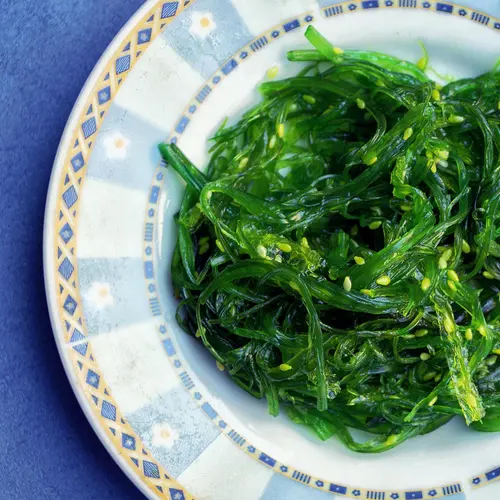Venison is a good protein choice for people with cardiovascular disease. Venison differs from red meat in part because it is leaner and has less fat and fewer calories.
Deer meat, a type of venison, is high in essential amino acids. However, you’ll need to know how to properly store, clean, and cook deer meat to avoid foodborne illnesses.
What Does Deer Meat Taste Like?
The flavor of venison is related to what the living animal ate. If the deer ate corn, they’ll have a milder flavor than deer that eat acorns and sage. Venison can be described as ‘gamey,’ but that flavor is more noticeable in the fat areas.
Other intense flavors can occur if the deer meat isn’t processed correctly. Improper processes could include:
- Improper bleeding
- Delay in field dressing
- Failure to cool the carcass quickly
What Are Deer Meat Health Benefits?
Deer meat is a nutritious option. A three-ounce cut of deer meat has 134 calories and six grams of fat. The same amount of beef has 168 calories and 11 grams of fat, while pork has 224 calories and 18 grams of fat.
Types of Deer Meat
The deer meat can be handled in various ways after being deboned. You can tenderize the deer meat, turn it into jerky strips, grind it up, or keep whole cuts for roasts.
You can also keep venison dehydrated, canned in a pressure canner, or frozen for later consumption.
How to Cook Deer Meat
After your deer meat has been deboned and processed, it’s crucial that you freeze the meat for 30 days. Freezing deer meat helps kill parasites like Trichinella and Toxoplasmosis gondii.
That said, freezing doesn’t kill bacteria that cause foodborne illnesses like E. coli or Salmonella, so you’ll need to cook your meat after thawing it, letting it reach 165 degrees Fahrenheit internally.
Eating venison fresh isn't recommended because of how common parasites and tapeworms are. Even in homemade jerky and fermented sausages, E. coli can stay in the deer's intestinal tract. You should steam, roast, or boil venison to 165 degrees Fahrenheit before drying.
When making soups, stews, casseroles, and meatloaf, make sure leftovers are reheated to the same 165 degrees F.
Venison can taste gamey, dry, and tough, but there are ways to improve flavor and texture. To reduce the gamey flavor, soak the deer meat in two tablespoons of vinegar to one quart of water an hour before cooking.
To keep your deer meat moist, you can rub the roast with oil before cooking.
To tenderize the meat and add flavor, you can soak the deer meat in a marinade. French or Italian dressings, tomato sauce, or fruit juices all make great marinades. Make sure you marinate the meat in your refrigerator and throw out the marinade after cooking the meat. The longer you marinate the meat, the more tender it will be. However, marinating for more than 24 hours can make the meat mushy.
Deer Meat Risks
While deer meat can be pretty nutritious, you should be aware of the risks of consuming venison. Certain wild animals can carry infectious diseases like:
Brucellosis. As a hunter, you increase the risk of this disease when you come in contact with the deer's blood and organs. If an infected animal's blood, fluid, or tissue gets in your eyes, nose, mouth, or skin, you can get sick. This can occur during:
- Field dressing
- Butchering
- Handling and preparing raw meat before cooking
- Eating meat that's not fully cooked
When hunting, avoid animals that look visibly ill or are already dead. You should also use safe field dressing techniques because even healthy-appearing animals could be infected with brucellosis.
Safe field dressing techniques include:
- Using clean, sharp knives
- Wearing eye protection
- Using disposable or reusable rubber or latex gloves
- Avoiding direct contact with fluid or organs
- Avoiding direct contact with hunting dogs that could have come in contact with hunted animals
- Carefully and entirely discarding disposable gloves and parts of the carcass that won't be used
- Washing your hands with soap and warm water for 20 seconds or more
- Cleaning all your tools and reusable gloves with disinfectant
- Feeding your dogs raw meat or other parts of the carcass, as these can infect them
It could take anywhere between a week to a month for you to start feeling sick. If you experience any symptoms of brucellosis, you should talk to your doctor immediately. Tell them about any contact you've had with wild animals like deer while hunting.
Signs of a brucellosis infection include:
- Fever
- Chills
- Sweating
- Headache
- Reduced appetite
- Fatigue
- Joint or muscle pain
Doctors will test your blood for brucellosis and get you started on a treatment plan.
Chronic wasting disease (CWD). There's no strong evidence that humans can get CWD. However, there is a risk if you consume meat that's been infected. There are monitoring tools that look at CWD rates in an area where you're hunting. Testing might not be available in every state, though, and some states test differently.
If you're hunting in an area where CWD is known, you should strongly consider getting the animals tested before eating their meat.
Generally, deer meat can provide a rewarding dinner, especially after a long hunting season. Venison is a nutritious alternative to red meat like beef and pork. However, it's essential to follow safety precautions to ensure you don't get sick from eating venison. With the right knowledge, tools, and precautions, you can get plenty of satisfying cuts of meat that can feed your family for months.
